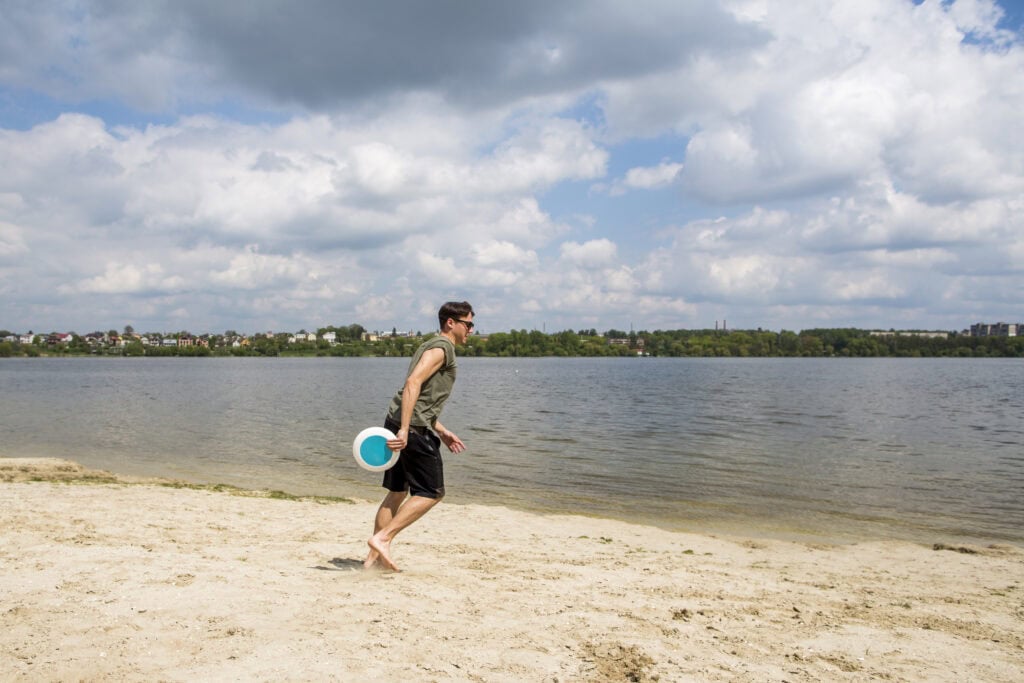
Delaware Made Easy A Flexible Guide to Attractions Entertainment Hotels and Events
Delaware is built for travel days that feel effortless. You can stand in a quiet gallery before lunch, stroll a riverfront promenade in the afternoon, bike a shaded park trail before sunset, and still have time for a concert, a comedy set, or a warm slice of boardwalk nostalgia after dark. The secret is proximity. Museums, estates, theaters, arenas, wildlife refuges, bays, beaches, and walkable town centers sit close enough together that you can mix and match without spending your vacation in a car. This guide gives you a fresh, link‑free playbook for the “Places to Go” category—attractions, entertainment, hotels, and events—organized around flexible itineraries and practical, real‑world details that match how people actually travel.
How to Use These Blueprints
Think of Delaware as a ribbon with four distinct moods. The Brandywine Valley and Wilmington hold art, gardens, mills, and riverfront nightlife. Newark brings college‑town energy and trail systems that wind through woods and meadows. The center of the state pivots to aviation, heritage, and big‑weekend buzz around the capital. The coast—from Lewes and Rehoboth to Bethany and Fenwick—supplies beaches, boardwalks, state parks, and wide‑angle sunsets. Pick one mood as a home base, then borrow a day from the others. Because distances are short, adding a detour or a last‑minute show rarely derails your plans.
To keep this guide useful for months and seasons, the details focus on rhythms and combinations rather than one‑time exhibits or dated schedules. Use the sections below as templates, swap in the shows and events you find, and let the weather help you choose which version of Delaware you want today.
A 48‑Hour Northern Culture Loop
Start in the Brandywine and Wilmington corridor, where industrial history and horticulture made peace with each other and never looked back. Spend your first morning with art that lives here—American illustration, regional landscapes, sculpture gardens, and rooms that ask you to look slowly. After lunch, trade galleries for gardens. The formal allées and fountains of grand estates feel different in every season; spring bulbs, summer displays, autumn color, winter lights. When the light softens, shift to the riverfront. The evening can go high‑energy or low‑key: a touring production in a historic theater, a chamber concert in a gilded hall, or a long, unhurried dinner with the sound of the river in the background.
On day two, add texture. Choose a restored mill or a technology museum where gears and looms still move, or a smaller house museum where a guide tells stories that print can’t hold. After lunch, point the afternoon toward Newark for a contrast—coffee, bookshops, and a short hike among rolling hills in a state park that sits close to town. Return north for a nightcap performance or a dessert you promise to split and never do. Hotels here divide into two useful types: business‑class properties with space, parking, and pools for families, and boutique addresses where the lobby doubles as a living room and the bar as a conversation.
A 48‑Hour Beach and Bay Recharge

Begin at the cape where dunes fold into bike paths, observation towers, and beaches that look different hour to hour. If you like your mornings quiet, walk the shoreline at sunrise and watch gulls argue with the light. If you like motion, rent bikes and follow paved paths under pines and over sand. Midday wants a downtown stroll. Beach‑town streets thread cafés, bakeries, galleries, and shops into a grid built for serendipity. Afternoons are dictated by the sky. When it burns blue, swim or nap; when thin clouds roll in, visit a nearby wildlife area and let the marsh teach you patience.
Evenings at the coast are old‑fashioned in the best way. A lawn concert at the bandstand, a small acoustic set on a porch, a last walk on the boards with a cone you chose like you were eight again. Day two can run inland a few minutes to a quieter town with historic streets and a stately pace, or south to a beach with more elbow room. Hotels along the shore come in three personalities. Oceanfront rooms buy you the sound of waves and a balcony that makes doing nothing a plan. Inns tucked into residential blocks trade views for sleep and short walks to supper. Larger properties near the highway offer parking ease and rooms that swallow coolers and chairs without complaint.
A 48‑Hour Capital and Countryside Mash‑Up
Central Delaware tells a different story, and it’s louder in a good way on certain weekends. Aviation museums let you walk beneath the wings and into the histories of cargo planes and support aircraft; docents talk like people who loved the work and still do. Heritage districts pair brick, greens, and guided walks that pull colonial timelines into human focus. When big events arrive, hotels fill and restaurants run late, turning the capital into a festival ground. Plan around it rather than against it. Book dinner before the doors open. Sleep late. Build your quiet day after the noise—farm stands, creameries, country roads under big skies—to remind yourself that Delaware still grows more than schedules.
Stretch It: A Three‑Day Rhythm
If you have 72 hours, braid the strands. Spend day one on art and gardens up north, day two on beaches and bays, and day three on aviation and heritage with a slow return through fields and small towns. It’s enough time to see how well the pieces fit and still feel like you left something for next time. Add a second night on the coast if you want sunrise on the water twice; add a second night up north if a festival or museum opening has a hold on you.
Go All‑In: A Five‑Day Slow Tour

Five days let Delaware teach you its timing. Start with a full Brandywine day—galleries in the morning, gardens in the afternoon, theater at night. Follow with Newark’s mix of trail and café, and angle south for the capital, where you split the third day between museums and a long dinner. Days four and five belong to the coast. Spend one like a local with bikes, a state park loop, a lunch that was meant for picnics, and a boardwalk hour that behaves like a memory. Spend the other chasing birds on the bay side, wandering historic streets, and watching the sky do its work over open water. If you can travel off‑peak, shoulder seasons turn the entire shoreline into a private sounding board: warm water, cooler air, and space to hear yourself think https://bestof302.net/harvest-and-tide-a-seasonal-journey-through-delaware-food-and-dining/.
Attractions, Reimagined by Interest
Travelers rarely fit into neat boxes, but it helps to think by interest set. If you’re the Curator, anchor your days with museums and sculpture gardens, then let restored mills and specialty collections fill the spaces between. If you’re the Naturalist, divide your time between state parks—White Clay Creek’s shaded hills, Cape Henlopen’s dunes and towers, the oceanfront beaches of Delaware Seashore State Park—and the broad, bird‑rich marshlands of national wildlife refuges where boardwalks and dike roads make access easy for strollers and cameras. If you’re the Socialite, follow event calendars toward concerts, comedy, late‑night riverfront rooms, and summer bandstands where the music is free and the vibe costs nothing but an hour. If you’re the Family Navigator, braid hands‑on museums, air and space exhibits, trails with bathrooms close by, and beach towns that lower the volume at night so mornings come without drama.
Entertainment Without the Guesswork
Evenings follow the room. Northern venues reward people who like to see performers’ faces as much as hear their voices, from orchestras in ornate halls to small stages that sit close enough for storytelling. Campus halls in Newark shuffle between comedians, visiting speakers, student ensembles, and touring musicians. The capital swings between concert weekends, comedy nights, and a festival‑size energy that makes midnight meals feel sensible. Coastal towns turn music into background in summer—pavilion sets, bandstands on greens, porch pickers whose songs ride the salt air—and scale to songwriter nights and club‑room intimacy when the air cools. If you travel with kids, keep a short list of indoor options in your pocket—bowling, arcades, escape rooms, indoor mini‑golf—so a sudden shower becomes an invitation rather than an interruption.
Hotels That Match Your Mood
Where you sleep shapes what you do. If you want to park once and walk to galleries, theaters, and riverfront patios, choose a boutique hotel near the cultural core. If you’re running with a team or a family in tow, a full‑service or suite‑style property with parking, pools, and space to spread out pays for itself in sanity. At the beaches, decide what sound you want from your pillow before you book. Waves mean oceanfront. Porch chatter under trees means a residential‑street inn. Convenience and budget control point you toward larger hotels near the main road, where rooms absorb gear and schedules without complaint. Across the state, accessibility has improved steadily. Ask about step‑free entries, roll‑in showers, visual alarms, and room layouts; staff are used to fielding specifics and will often send photos so you can plan with confidence.
Events by Season, Without the Date Anxiety
Spring opens with gardens and bulbs up north, kite‑blue beach days, and farmers’ markets that reappear in towns across the map. Trails firm up, charity runs spill people onto streets, and the first outdoor concerts test sound systems for summer. The shoulder between spring and summer belongs to weddings, graduations, and porch dinners; book rooms early if your dates flirt with big weekends.
Summer is the high tide. Boardwalk concerts, movies under the stars, fireworks, evening art walks, market days that turn parking lots and greens into weekly meet‑ups—it all runs at once. You don’t have to plan hard; walking toward music or the smell of something sweet will usually work.
Fall balances warm water with cool air. Harvest weekends on farms and town greens bring hayrides, cider, and music; coastal towns add playful parades and costumed walks that turn sidewalks into theaters. It’s the best season for people who travel to eat and want menus anchored in squash, apples, oysters, and stews.
Winter trades volume for glow. Historic districts hang lights, gardens transform paths into luminous worlds, stages lean into seasonal concerts and plays, and ice festivals fill plazas with glittering sculptures. Off‑season beach rituals—storm watching from a balcony, sunrise walks behind a thermos, brave‑heart dips that make good stories—turn the coast into a quiet retreat rather than a memory of crowds.
Rain Plans You’ll Actually Look Forward To

Aviation hangars, discovery centers, science halls, and art museums absorb weather with ease. House tours and conservatories feel richer in soft light. For grown‑ups, tasting rooms, cooking classes, painting workshops, and spa appointments turn drizzle into permission to slow down. For kids, bowling, arcades, and craft studios keep moods buoyant until the sky clears. If you woke up with a beach plan and the wind argues, borrow an hour in a wildlife refuge—birds don’t mind a little weather, and you might catch a heron posing against a silver sky.
Accessibility, Family‑Friendly Wins, and Traveling Light
Delaware’s most reliable advantage is ease. Boardwalks and riverfront paths are naturally step‑free. Many museums and garden campuses offer wheelchairs, paved routes, benches, and clear signage. Beach towns increasingly provide matting across deeper sand and seasonal beach‑chair programs. If the sound of summer overwhelms, shoulder seasons and early hours soften the soundscape without stealing the view. Families do best with rituals: the same breakfast table in a café that learns your names, a midday quiet hour between excursions, one small daily promise to the kids—a carousel spin, a nature‑center touch tank, a bandstand dance—that keeps the mood light.
Pack like you’ll say yes to detours. A light layer, a compact towel, sunscreen, a refillable bottle, and a portable charger turn museum days into river hours and beach hours into sunset walks without pit stops. Keep a tote in the trunk for market finds and a small cooler for cheeses and berries you didn’t plan on buying and will be glad you did.
Planning Tips That Make the 302 Feel Even Smaller
Aim for early breakfasts and either early or late dinners in summer; you’ll spend more time enjoying and less time waiting. Travel midweek if you can, especially to the coast, where rates and crowds change dramatically after Sunday night. Book hotel rooms early for big weekends but keep your daytime plans flexible; word‑of‑mouth advice from docents, baristas, and desk staff often beats whatever you found online three months ago. If your group has mixed interests, choose a base where walkers can roam while drivers dip out for shows or trails, then reconvene for ice cream and a debrief.
Sustainability choices are simple and add up quickly. Walk once you’ve parked. Rent bikes for town grids and park trails. Respect dune signs and nesting areas. Refill bottles at fountains. Shop from local makers and small galleries so souvenirs feel like stories. Decline daily linen changes on multi‑night stays; it saves water and buys hotels time for the cleaning that matters.
Sample Day Cards You Can Swap In
A River and Garden Day looks like this. A slow morning in a museum, a long lunch by the water, a stroll through a formal garden where fountains and hedges set the mood, a matinee or early concert, and a dessert walk where the city lights paint the river.
A Boardwalk and Bay Day starts before the sun, with a dune path and a horizon you can’t stop photographing. Coffee and a pastry in a downtown shop, a few hours of beach or bike, a short drive to a bay‑side wildlife area where you count egrets and ospreys, then a pavilion show and a long, sandy walk under stars.
An Air and Brick Day splits time between airplanes you can stand beneath and historic streets where every corner looks like a painting. It ends with dinner that runs long because the server suggested the right dessert and an extra hour never hurt anyone on vacation.
Why Delaware Works—And Why You’ll Come Back
The best trips leave you both satisfied and curious, and Delaware is built to do that on repeat. Attractions are saturated with story rather than crowded with spectacle. Entertainment puts you close enough to see how effort becomes art. Hotels prefer welcome to drama. Events feel like community first and commerce second. And the distances between everything might be the state’s most generous gift. You can move from one mood to another—gallery to garden, trail to boardwalk, hangar to historic green—without changing who you are that day.
When you return, you’ll find that the script has changed just enough to keep things fresh. Exhibitions rotate. Gardens open to the next chapter of color. Event calendars shuffle bands and festivals. The ocean writes a different line on the sand. A front desk greets you by name, and a barista asks how the trails were. That’s Delaware’s quiet promise for the “Places to Go” category: a state that makes it easy to design days you’ll remember and trips you’ll repeat, with attractions, entertainment, hotels, and events arranged close enough together that the only hard part is deciding which version of the 302 you want today.